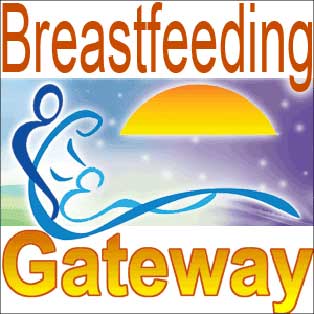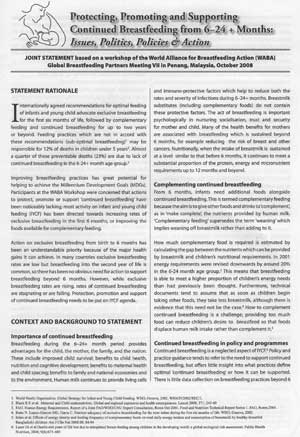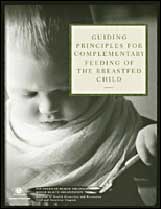
The World Alliance for Breastfeeding Action (WABA) is a global network of individuals
& organisations concerned with the protection, promotion & support of breastfeeding worldwide.
WABA action is based on the Innocenti Declaration, the Ten Links for Nurturing the Future and the
Global Strategy for Infant & Young Child Feeding. WABA is in consultative status with UNICEF & an NGO
in Special Consultative Status with the Economic and Social Council of the United Nations (ECOSOC).
& organisations concerned with the protection, promotion & support of breastfeeding worldwide.
WABA action is based on the Innocenti Declaration, the Ten Links for Nurturing the Future and the
Global Strategy for Infant & Young Child Feeding. WABA is in consultative status with UNICEF & an NGO
in Special Consultative Status with the Economic and Social Council of the United Nations (ECOSOC).
|
|
||||||||||||||||||||||||||||||||

|
||||||||||||||||||||||||||||||||
Health Care IssuesComplementary Feeding |
||||||||||||||||||||||||||||||||
|

World Alliance for Breastfeeding Action
PO Box 1200, 10850 Penang, Malaysia | Tel: 604-6584816 | Fax: 604-6572655 | E-mail: waba@waba.org.my | http://www.waba.org.my
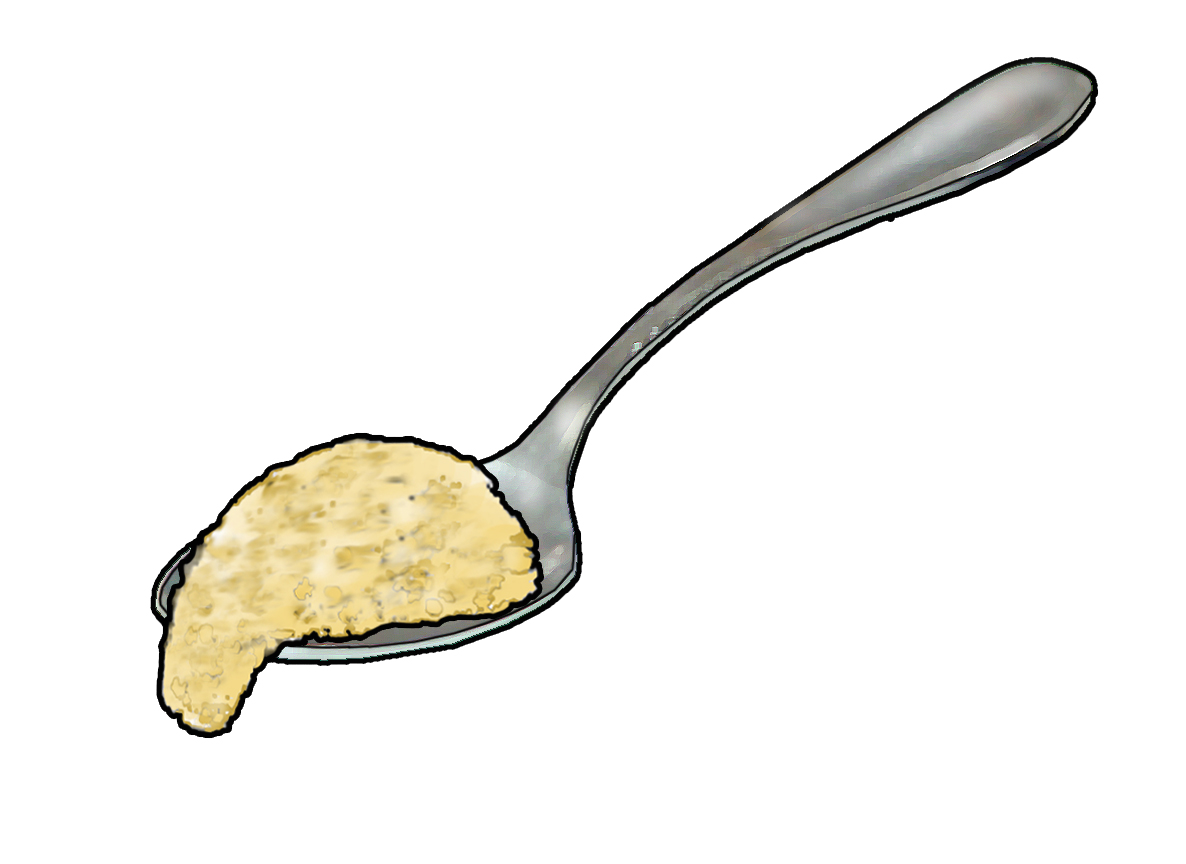 Complementary feeding is the term used for giving other foods and drinks in addition to breastfeeding after the completion of the 6 months exclusive breastfeeding period. The food and drink given should “complement” or make complete - the energy and nutrition provided by continued frequent breastfeeding up to two years and beyond. In other words, complementary foods are needed to fill the gap between the total nutritional needs of a child and the amounts provided by breastmilk.
Complementary feeding is the term used for giving other foods and drinks in addition to breastfeeding after the completion of the 6 months exclusive breastfeeding period. The food and drink given should “complement” or make complete - the energy and nutrition provided by continued frequent breastfeeding up to two years and beyond. In other words, complementary foods are needed to fill the gap between the total nutritional needs of a child and the amounts provided by breastmilk. 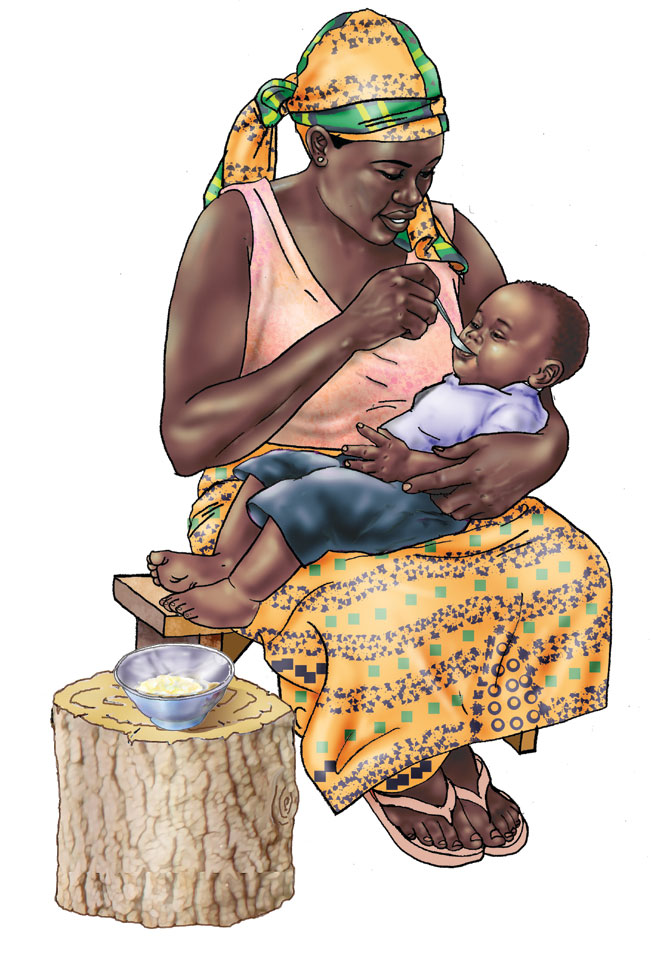 Inadequate nutritional quality, or the baby is given complementary food too early or too late, in too small amounts, or not frequently enough are some common challenges that mothers or caretakers face when introducing complementary food to children 6-24 months old.
Inadequate nutritional quality, or the baby is given complementary food too early or too late, in too small amounts, or not frequently enough are some common challenges that mothers or caretakers face when introducing complementary food to children 6-24 months old. 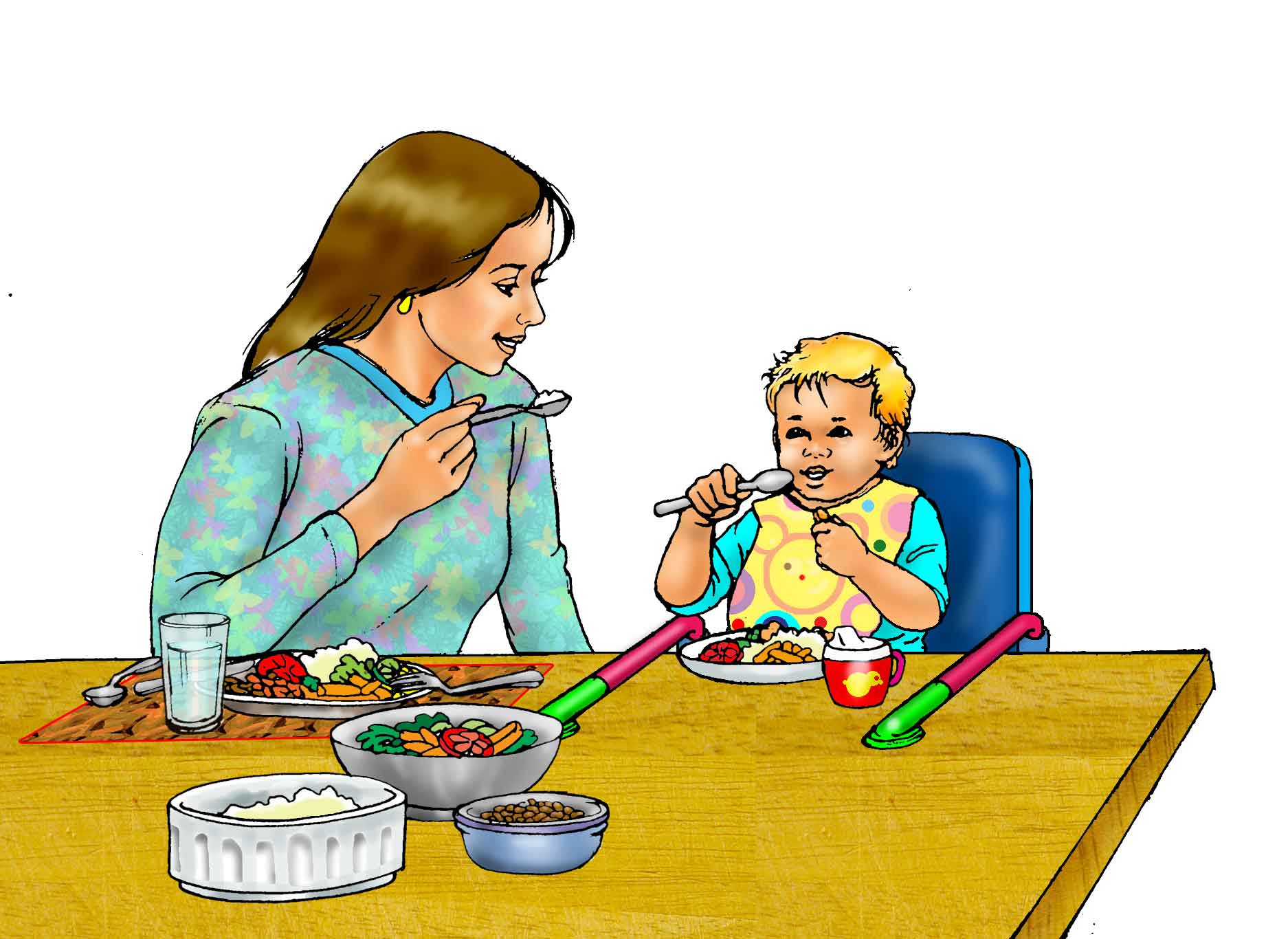 The feeding pattern in the first two years of life has tremendous impact on the individual, household and society as a whole. Poor infant feeding patterns often lead to malnutrition. Malnutrition occurring in the first two years of life is virtually irreversible and impairs:
The feeding pattern in the first two years of life has tremendous impact on the individual, household and society as a whole. Poor infant feeding patterns often lead to malnutrition. Malnutrition occurring in the first two years of life is virtually irreversible and impairs:  It takes time for a young child to learn how to use his/her lips to clear food off the spoon,
It takes time for a young child to learn how to use his/her lips to clear food off the spoon,  and how to move the new food to the back of the mouth, ready for swallowing. Some food may run down the chin, or be spat out. The health workers should tell the families that this dose not mean that the child dislike the food. With encouragement and patience, a child soon learns how to eat new foods and enjoy new tastes.
and how to move the new food to the back of the mouth, ready for swallowing. Some food may run down the chin, or be spat out. The health workers should tell the families that this dose not mean that the child dislike the food. With encouragement and patience, a child soon learns how to eat new foods and enjoy new tastes. 